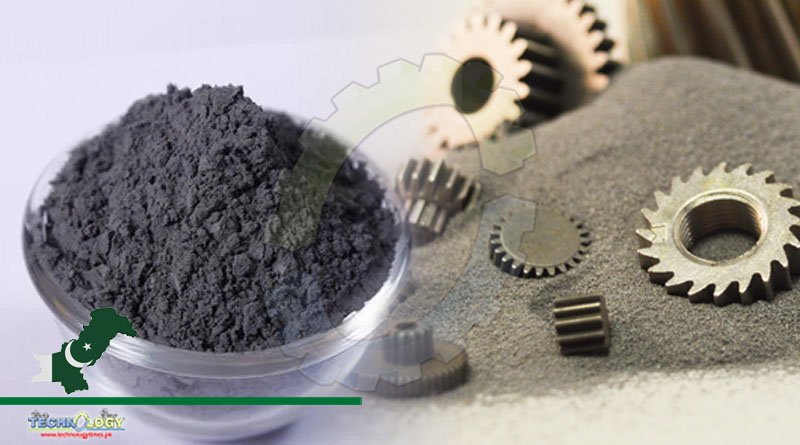Wazir Muhammad said Pakistan has potential to produce iron powder-made products, as all the mixing materials, including iron powder, are available locally.

Pakistan (PK), can become one of the largest exporters of products made out of iron powder if the country devises a policy to encourage value addition locally. The initiative will help the country earn valuable foreign exchange and generate employment.
Highlighting the importance of using iron powder to manufacture a variety of quality export products, Prof Nisar Muhammad Khan Khattak from the University of Engineering and Technology, Peshawar, said Pakistan has a lot of potential to produce the plain iron powder and different value-added products. He said it didn’t cost much to put in place an iron powder value addition plant, but the government’s help was needed to do so.
He said naturally, iron is found in the form of ore, stones, and after purification, it can be turned into powder in multiple grades/meshes by grinding. Nisar Khattak said despite having abundant iron deposits, Pakistan imported a variety of iron products at the cost of precious foreign exchange.
Iron powder is produced in a multitude of grades because different grain, purity, or density is required to manufacture different materials and products. High-purity water-atomised iron powder (green strength powder) is needed to produce magnetic paints, printing inks, and specified machine parts with strong components.
Iron powder is generally placed into drum brake lining, creating the necessary friction in different applications, brake pads in vehicles, aircraft and trains.
It is also used to produce the sintered parts; in the production of soft magnetic composites; in brazing and welding; thermal surface coating; printing, dyes, chemical applications, paints, oil filtration, metal clays, etc. As a filler, it helps increase the durability and performance of gadgets by disintegrating the generated heat.
Taking 2020 as the base year when the iron powder market (IPM) was worth $5.58 billion, the global IPM is projected to reach $8.30 billion by the year 2028 at a compound annual growth rate (CAGR) of 5.2%. In 2020, Pakistan was the 73rd largest iron powder exporter, and iron powder was the 902nd most exported product worth $294 million.
The major importers of iron powder from Pakistan were China, Saudi Arabia, and the UAE. During the same year, Pakistan also was the 58th largest importer of iron powder, which was the 807th largely imported item mostly from China, Belarus, and Brazil worth $477 million.
Wazir Muhammad, a former director general mines, KP, and mineral processing engineer, said, “Iron viability of over 60% is acceptable for industrial use, which is gotten through melting.” He said Pakistan has potential to produce iron powder-made products, as all the mixing materials, including iron powder, are available locally.
Faizanul Haq Mirza, a mechanical engineer and metallurgist, and also a member of the Surgical Committee of Sialkot Chamber of Commerce and Industry, told that iron powder is used in the powder metallurgy process. “Sialkot’s surgical industry has to import iron powder for use in manufacture of different products as it is not produced in sizeable quantity in Pakistan.”
He said specific machinery and specially-designed set-ups were needed to produce iron powder products. He said a few value-added manufacturing units were installed in Gujranwala Tool and Dye Manufacturing Centre, but the government continued importing iron powder, which discouraged the local producers, forcing them to stop production.
Mirza said though iron powder-based die cavity-manufacturing was not complicated to launch, the initial investment was high. He said that the government should incentivize the production of iron powder-based products locally to cut back on their imports.
Originally published at Nation